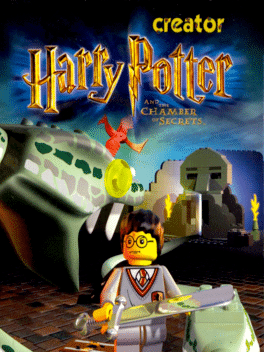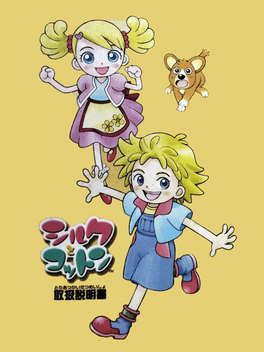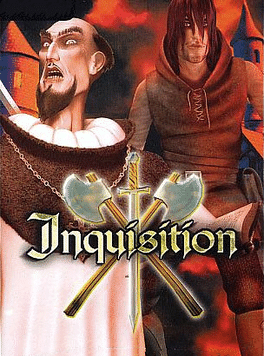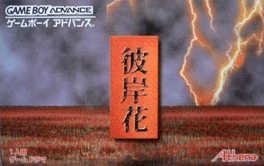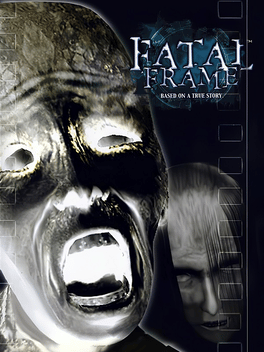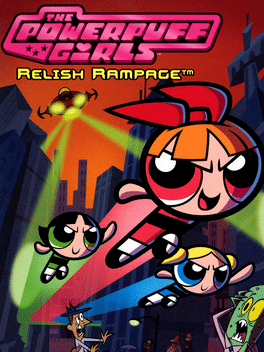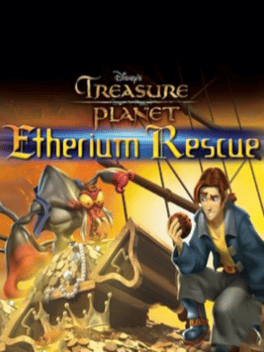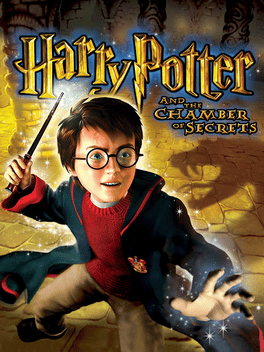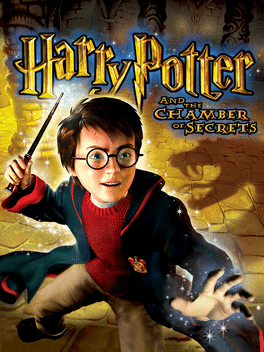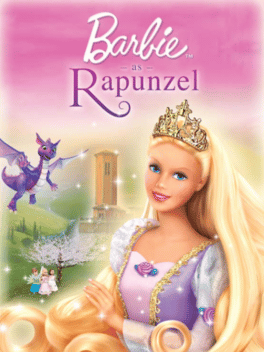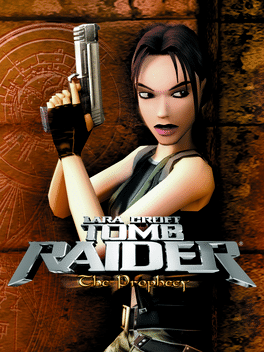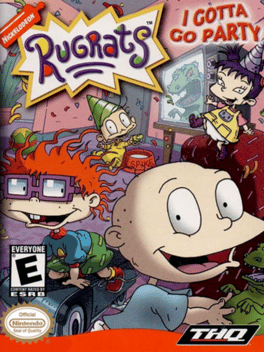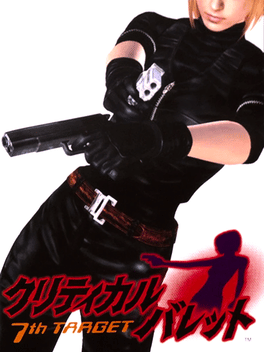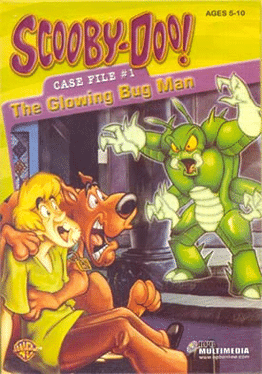New Adventure Games - Page 422
-
LEGO Creator: Harry Potter and the Chamber of Secrets
2002
LEGO Creator: Harry Potter and the Chamber of Secrets is an adventure/puzzle game where players can explore the a range of environments from Harry's second year, including Hogwarts, the Quidditch pitch, the Dark Forest, Diagon Alley, and even the mysterious Chamber of Secrets itself. On this journey, players will collect chocolate frogs, find LEGO treasure chests, and cast spells at characters, creatures, and models. In addition, players can fully customize their adventure by building structures and characters in the workshop and dropping their creations into the world of Hogwarts. -
Silk to Cotton
2002
Silk to Cotton
2002
Silk to Cotton is an Action game, published by Mig Entertainment, which was released in Japan in 2002. -
Inquisition
2002
Inquisition
2002
Inquisition is a third-person 3D real time action/adventure game. It offers a blend of action, infiltration and adventure in a medieval universe. Sneaking between homes and past sleeping guards, players will need to keep themselves from being spotted, hopping from ledge to ledge and from roof to roof, picking locks, striking the enemy, gleaning and stealing information without the enemy knowing : these are the kind of actions that will bring players closer to discovering the hiding place of the Templar knights’ treasure. Players are also given different means of exploring and moving around in total secrecy: creeping silently and hiding in shadows. There are riddles closely linked to the scenario which they will need to solve over the course of their adventure: finding and opening passageways, gathering objects and using them wisely. -
Higanbana
2002
Higanbana
2002
Higanbana is an Adventure game, published by Athena, which was released in Japan in 2002. -
Fatal Frame
2002
Fatal Frame
2002
Fatal Frame is an enhanced port of the original PS2 game. It includes the following upgrades and additions: - A new ending - 11 new ghosts - New unlockable costumes - A new difficulty level - Graphical upgrades -
The PowerPuff Girls: Relish Rampage
2002
Mojo Jojo is fed up with The Powerpuff Girls. He's invented a scheme to put all of Townsville under his mind control...Radio Jojo! But Mojo doesn't know his sour signals are strong enough to summon aliens to invade Townsville! As The Powerpuff Girls, you must defeat Mojo and annihilate the aliens before the Townsville citizens become aliens forever! Battle your way through level upon level of interesting missions and outrageous clashes in a 3-D Townsville world. The survival of everyone's favorite superheroes, The Powerpuff Girls, depends on you! -
Superman: The Man of Steel
2002
In the Xbox only Man of Steel, Players control Superman through 7 levels of 3D flying, overhead vertical scrolling and sidescrolling secitons. -
Disney's Treasure Planet: Etherium Rescue
2002
Treasure Planet: Etherium Rescue is one of the three games from the Treasure Planet: Training Academy collection that was distributed by McDonald's Mighty Kid's Meals, the other two being Treasure Planet: Treasure Racer and Treasure Planet: Broadside Blast. Etherium Rescue was published by Disney Interactive and released in 2002, along with all the other Treasure Planet related games. -
Harry Potter and The Chamber of Secrets
2002
Port of "Harry Potter and The Chamber of Secrets" for Xbox and GameCube. Developed by EA UK and Eurocom, the GameCube, PlayStation 2 and Xbox versions of the game allow the player to access a broom and enter free-flight mode.[2] While the PlayStation 2 version allows the player to land anywhere they want, in the Xbox and GameCube version the landing zones are limited. In the GameCube version, there is an exclusive feature involving GC–GBA connectivity that allows a secret room to be opened when the two versions are connected. -
Harry Potter and the Chamber of Secrets
2002
star 7.4The PlayStation 2 version was ported internally by Electronic Arts instead of by Eurocom who developed the other console versions, hence the PS2 version sporting some noticeable differences. but otherwise keeping the majority of the game the same. Some differences include the PS2 version of the game having an overall lower difficulty level plus when Harry is riding a broom he can land it anywhere instead of only in designated landing spots. -
Barbie as Rapunzel: A Creative Adventure
2002
Barbie plays Rapunzel. A witch has turned Prince Stefan to stone and destroyed much of the castle, all for the offense of not being invited to the masquerade ball. Rapunzel and her dragon friend, Penelope, set out to restore the castle in time for the ball and find missing magic gems to restore the prince. -
The Wild Thornberrys Movie
2002
Based on the December 2002 movie from Paramount Pictures and Nickelodeon Movies, follow the Wild Thornberrys from majestic settings of the Serengeti to the proper streets of London. After an incident in Africa puts Eliza in grave danger, she is sent off to boarding school in London. Upon hearing about an evil plot by poachers to capture the wild elephants of the Serengeti, she escapes back to the wild to stop the catastrophic event and faces her biggest challenge yet. With her ability to speak with animals, Eliza gets help from her favorite chimp Darwin. But will Eliza get back to Africa in time to stop the poachers? Take a ride full of action and suspense with the Wild Thornberrys! -
Tomb Raider: The Prophecy
2002
star 6Tomb Raider: The Prophecy is the first game for the Gameboy Advance. Lara is now in a quasi-3D overhead environment, as opposed to the 2D-platformer view of the previous handheld versions. This view proves helpful while Lara runs, jumps, shimmys, and shoots around. Although there is lack of a save feature, there is a password system which lets you restore back to 'almost' where you left. -
Rugrats: I Gotta Go Party
2002
Get ready for an all-new multi-player party game as Tommy plays hide `n seek with all of his friends. If you help Tommy find the other Rugrats you can unlock outrageous party games such as Angelica?s Cookies, Phil?s Mud Pies, Sandbox Blues and many more! The more Rugrats that you can find, the more party games that become unlocked. Designed for multiplayer competition, this game is packed with hours and hours of gaming on the go! Better hurry - the fun doesn?t begin until you find the first Rugrat. -
Frogger's Adventures 2: The Lost Wand
2002
Frogger's Adventures 2: The Lost Wand is an Adventure game, developed and published by Konami, which was released in 2002. -
Critical Bullet: 7th Target
2002
Critical Bullet: 7th Target is a 2002 action/adventure game developed by Flagship and published by Capcom released only in Japan. The game is the sequel to Bounty Hunter Sara (which was also only released in Japan). -
Reign of Fire
2002
Reign of Fire
2002
star 4.5Based on the movie, Reign of Fire lets you play as either a human or a dragon in an epic battle. As a human, you'll take the role of a resistance fighter who's trying to defend the last remaining humans from attack. You must make your way to the site of the sole male dragon using a variety of well-equipped vehicles and high-tech weaponry. -
Scooby-Doo: Case File 1 - The Glowing Bug Man
2002
Scooby-Doo solves a mystery and fun puzzles in this computer game aimed at younger players.
